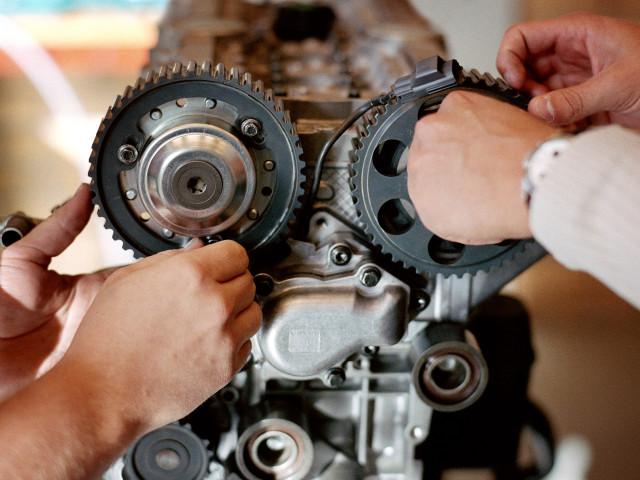Lectures and seminars on the principal layout of hull structures, the function of the different structure elements, hull loads, and classification rules. Application of beam theory, plate theory and finite element methods in the analysis of ship structures. Project where each student design the structure for a certain ship.
SD2722 Marine Structures 7.5 credits

Information per course offering
Choose semester and course offering to see current information and more about the course, such as course syllabus, study period, and application information.
Information for Autumn 2026 Start 24 Aug 2026 programme students
- Course location
KTH Campus
- Duration
- 24 Aug 2026 - 11 Jan 2027
- Periods
Autumn 2026: P2 (3 hp), P1 (4.5 hp)
- Pace of study
25%
- Application code
11301
- Form of study
Normal Daytime
- Language of instruction
English
- Course memo
- Course memo is not published
- Number of places
Places are not limited
- Target group
- All master programmes as long as it can be included in your programme.
- Planned modular schedule
- [object Object]
- Schedule
- Schedule is not published
Contact
Course syllabus as PDF
Please note: all information from the Course syllabus is available on this page in an accessible format.
Course syllabus SD2722 (Spring 2022–)Content and learning outcomes
Course contents
Intended learning outcomes
This course gives participants the opportunity to apply and deepen knowledge from earlier courses in solid mechanics and learn how to handle the challenges in the design of ship hull structures and other large complex structures. The objective is that students after finishing the course shall be able to:
- describe the different loads ship hull structures are exposed to and how these are considered in hull structural design;
- describe the principal arrangement of hull structures, explain why they are arranged as they are, describe the functions of the different structural members, and explain the interaction between different members;
- explain the terms strength, stiffness, stability, nominal stress, stress concentration, shear lag and efficient flange width for stiffened shell and beam structures, and be able to address these aspects in structural design;
- use knowledge and skills in beam and plate theory from earlier courses in the design of stiffened shell and beam structures;
- explain the terms fatigue and buckling in a structural mechanics context and briefly describe how these aspects are considered in hull structural design;
- describe the purpose and principles of classification of ships, and derive the related classification requirements based on beam and plate theory;
- explain what is meant by direct calculations, judge for which parts of a ship structure that the code based analysis and design need to be complemented with direct calculations, and perform direct calculations based on finite element analysis for such parts;
- design the midship section of a ship hull structure based on classification codes and complementary analysis;
- estimate a ship hull structure weight based on the ship geometry and the midship section hull structure;
- orally and in writing present, discuss and evaluate hull structural design related work, based on theory and established norms and principles, by using correct terminology;
- add value as an active design team member in the early phases of hull structural design.
Literature and preparations
Specific prerequisites
BSc in Vehicle Engineering, Engineering Physics, Mechanical Engineering or similar and at least 12 ECTS in solid mechancs and structures.
English B / English 6
Literature
Examination and completion
Grading scale
Examination
- ÖVN1 - Assignments, 7.5 credits, grading scale: A, B, C, D, E, FX, F
Based on recommendation from KTH’s coordinator for disabilities, the examiner will decide how to adapt an examination for students with documented disability.
The examiner may apply another examination format when re-examining individual students.
If the course is discontinued, students may request to be examined during the following two academic years.
Other requirements for final grade
ÖVN1 - 7,5 credits, grade scale: A, B, C, D, E, FX, F
Examiner
Ethical approach
- All members of a group are responsible for the group's work.
- In any assessment, every student shall honestly disclose any help received and sources used.
- In an oral assessment, every student shall be able to present and answer questions about the entire assignment and solution.